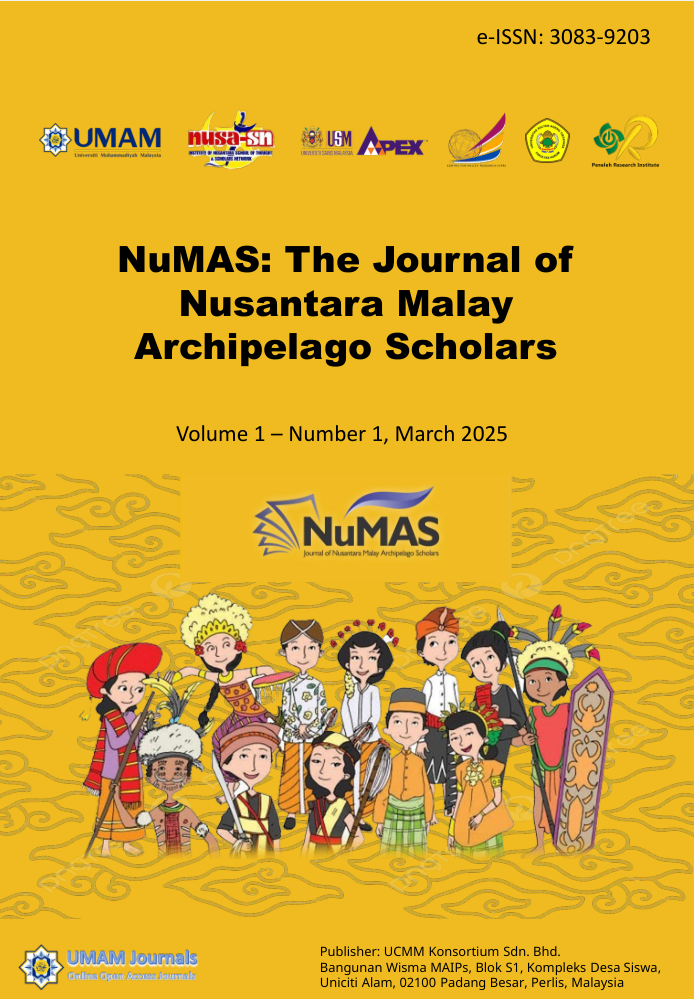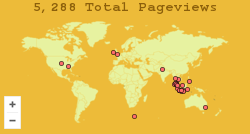Digital Preservation of Banjar Oral Literature: A Mixed Methods Study on the Integration of the 'Lamut' Storytelling Tradition in Modern Cultural Education
DOI:
https://doi.org/10.63088/m8xf0s08Keywords:
Oral Literature, Lamut Tradition, Immersive TechnologyAbstract
Purpose: This research project examines the digital preservation of Banjar oral literature, with a particular focus on the Lamut tradition. It employs a mixed-methods approach that integrates quantitative analysis and digital ethnography.
Methods: A sequential exploratory design is employed in this research, which combines participatory action research (PAR) with the implementation of immersive technologies. The study aims to develop a digital platform that facilitates the transmission of traditional knowledge.
Results: The results of the statistical analysis indicates a notable enhancement in comprehension of cultural values (p < 0.001, t = 7.842, df = 198) and a considerable degree of technological acceptance (perceived usefulness 4.2/5.0, perceived ease of use 3.8/5.0). The ethnographic analysis identified five essential performative elements in the Lamut tradition and revealed that 78% of the philosophical values can be effectively transmitted through digital platforms. The longitudinal data indicated a notable increase in community engagement, with the number of active users rising from 250 to 1,200 over the course of 12 months, representing a 68% retention rate. The formation of a community of practice through a multidisciplinary collaboration between Palamutan, technology developers, educators, and youth proved an effective strategy for addressing implementation challenges and developing adaptive solutions to overcome the limitations of digital infrastructure in rural areas.
Conclusions: The findings indicate that the integration of digital technologies with traditional pedagogical approaches, when implemented through robust participatory methodologies, can effectively support the sustainability and revitalisation of intangible cultural heritage in the digital age.
Downloads
References
Abbas, I. (2015). Metode Sejarah Lisan dan Historiografi Periode Jepang di Pulau di Morotai. Metafora: Education, Social Sciences and Humanities Journal, 2(3), 30–39.
Anderson, J., & Jones, K. (2009). The difference that place makes to methodology: Uncovering the ‘lived space’ of young people’s spatial practices. Children’s Geographies, 7(3), 291–303.
Anggraini, V., Segita, K., Aulia, R., Novita, N., & Sangalang, R. H. (2023). The Batasmiah Tradition in the Banjar Tribe Society of South Kalimantan. JETISH: Journal of Education Technology Information Social Sciences and Health, 2(2), 972–979.
Bradbury, H. (2015). The SAGE Handbook of Action Research. SAGE.
Creswell, J. W. (2014). Research Design: Qualitative, Quantitative, and Mixed Methods Approaches. SAGE.
Geng, B., Tian, Y., Zhang, L., & Chen, B. (2023). Evolution and its driving forces of rural settlements along the roadsides in the northeast of Jianghan Plain, China. Land Use Policy, 129, 106658.
Hulumudi, S. I., & Sukmayadi, Y. (2025). The Existence of Oral Traditions in Indonesia. Edumaspul: Jurnal Pendidikan, 9(1), 75–85.
Intangible Cultural Heritage Committee 2023 | UNESCO. (n.d.). Retrieved March 19, 2025, from https://www.unesco.org/en/intangible-cultural-heritage/committee-2023
Jahdiah, J. (2012). Lamut dan Madihin Kesenian Tradisional Banjar di Tengah Arus Modernisasi. Sabda: Jurnal Kajian Kebudayaan, 7(1), 105–116.
Jumainah, J., Lestary, A., & Krismanti, N. (2019). The Conceptualization of Banjarese Culture Through Adjectives In Banjarese Lullabies. Journal of English Teaching, Applied Linguistics and Literatures (JETALL), 2(2), 60.
Lee, L.-H., Braud, T., Zhou, P., Wang, L., Xu, D., Lin, Z., Kumar, A., Bermejo, C., & Hui, P. (2021). All One Needs to Know about Metaverse: A Complete Survey on Technological Singularity, Virtual Ecosystem, and Research Agenda (No. arXiv:2110.05352). arXiv.
Liew, C. L., Yeates, J., & Lilley, S. C. (2021). Digitized indigenous knowledge collections: Impact on cultural knowledge transmission, social connections, and cultural identity. Journal of the Association for Information Science and Technology, 72(12), 1575–1592.
Martina Puspita Rakhmi. (2020). Peran Sastra Lisan Sebagai Bagian Pendidikan Kebudayaan Di Indonesia Pascapandemi Covid-19. 329–334.
Nadilla, D. F. (2017). The Life Philosophy of the Banjarese as a Value Education in Learning History. Yupa: Historical Studies Journal, 1(2), 123.
Oladokun, B. D., Ajani, Y. A., Ukaegbu, B. C. N., & Oloniruha, E. A. (2024). Cultural Preservation Through Immersive Technology: The Metaverse as a Pathway to the Past. Preservation, Digital Technology & Culture, 53(3), 157–164.
Siliutina, I., Tytar, O., Barbash, M., Petrenko, N., & Yepyk, L. (2024a). Cultural preservation and digital heritage: Challenges and opportunities. Revista Amazonia Investiga, 14(75), 262–273.
Siliutina, I., Tytar, O., Barbash, M., Petrenko, N., & Yepyk, L. (2024b). Cultural preservation and digital heritage: Challenges and opportunities. Revista Amazonia Investiga, 14(75), 262–273.
Sullivan, C. M., Conway, F. D. L., Pomeroy, C., Hall-Arber, M., & Wright, D. J. (2015). Combining geographic information systems and ethnography to better understand and plan ocean space use. Applied Geography, 59, 70–77.
Webb, P. B., Jimenez, J., Elder, A., Cotte, A. O., Ravichandran, A., Holbrook, E., Baer, R. D., & Wilson, J. W. (2023). Exploring Lived Experiences of Gunshot Wound Survivors: A Key to Ethnographically Informed Public Health Interventions for Curbing Firearm Violence. Injury, 111240.
Yulianto, A. (2020). Mantra Pengobatan dan Lamut Tatamba Sebagai Media Penyembuhan Dalam Masyarakat Banjar (Kalimantan Selatan) Medication Mantra and Lamut Tatamba as Healing Media in Banjar People (South Kalimantan). Jurnal Lingko : Jurnal Kebahasaan Dan Kesastraan, 2.
Yulianto, A. (2023). Lamut Sebagai Seni Tradisi Tutur di Kalimantan Selatan: Kepunahan dan Pelestariannya. Jurnal Tradisi Lisan Nusantara, 3(1), Article 1.
Yuwono, A., Zustiyantoro ,Dhoni, Widodo, Widagdo ,Sungging, & and Rokhim, M. N. (2025). The resilience of traditional communities in the modern era: A case study of kentrung art in Java, Indonesia. Cogent Arts & Humanities, 12(1), 2469464.
Zhang, T., Xu, H., & Wang, C. (2022). Self-adaptability and topological deformation of Ganlan architectural heritage: Conservation and regeneration of Lianghekou Tujia village in Western Hubei, China. Frontiers of Architectural Research, 11(5), 865–876.
Downloads
Published
Issue
Section
License
Copyright (c) 2025 Irma Sucidha

This work is licensed under a Creative Commons Attribution 4.0 International License.
Authors retain copyright and grant the journal right of first publication with the work simultaneously licensed under a Creative Commons Attribution 4.0 International License that allows others to share the work with an acknowledgement of the work's authorship and initial publication in this journal.





